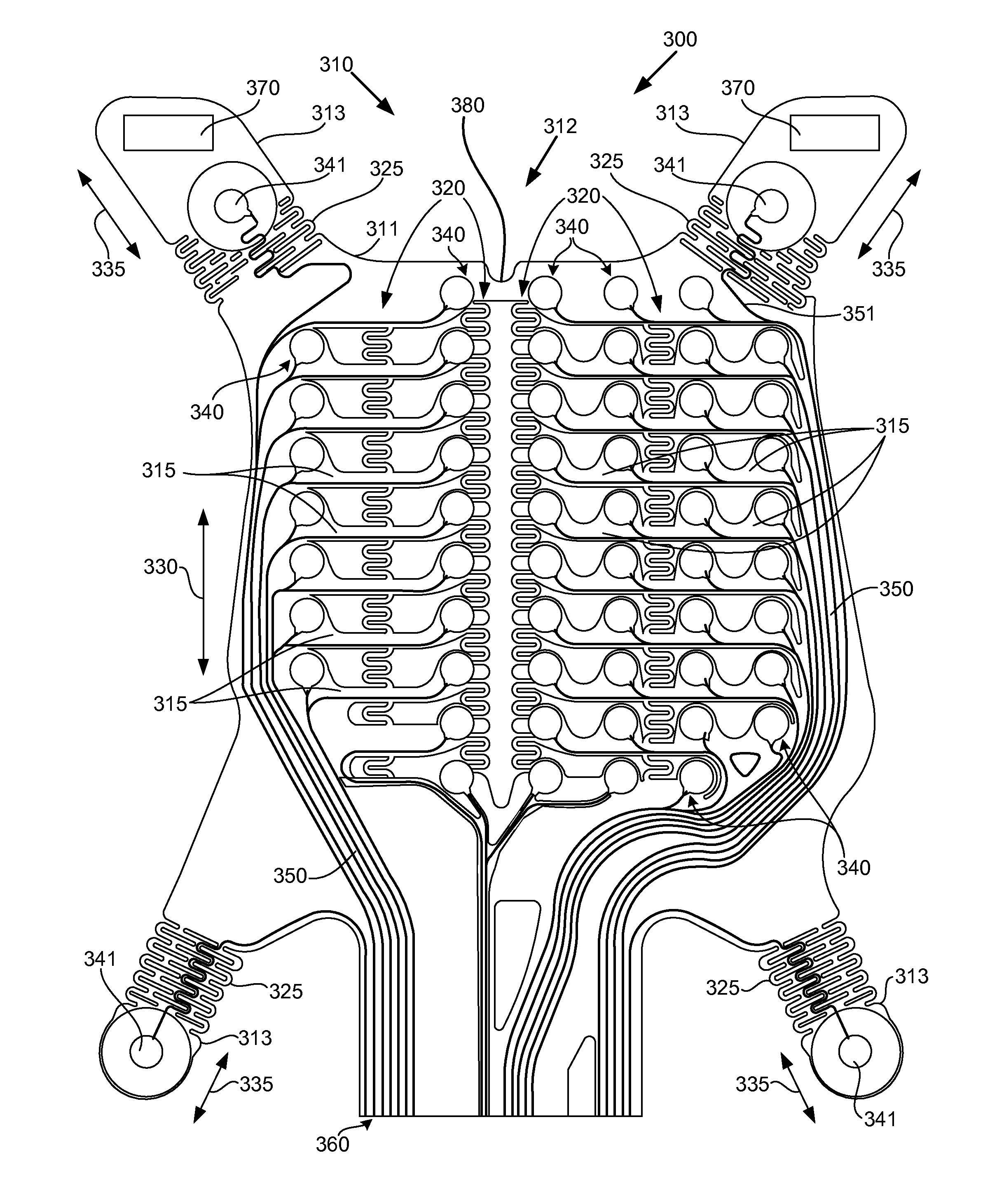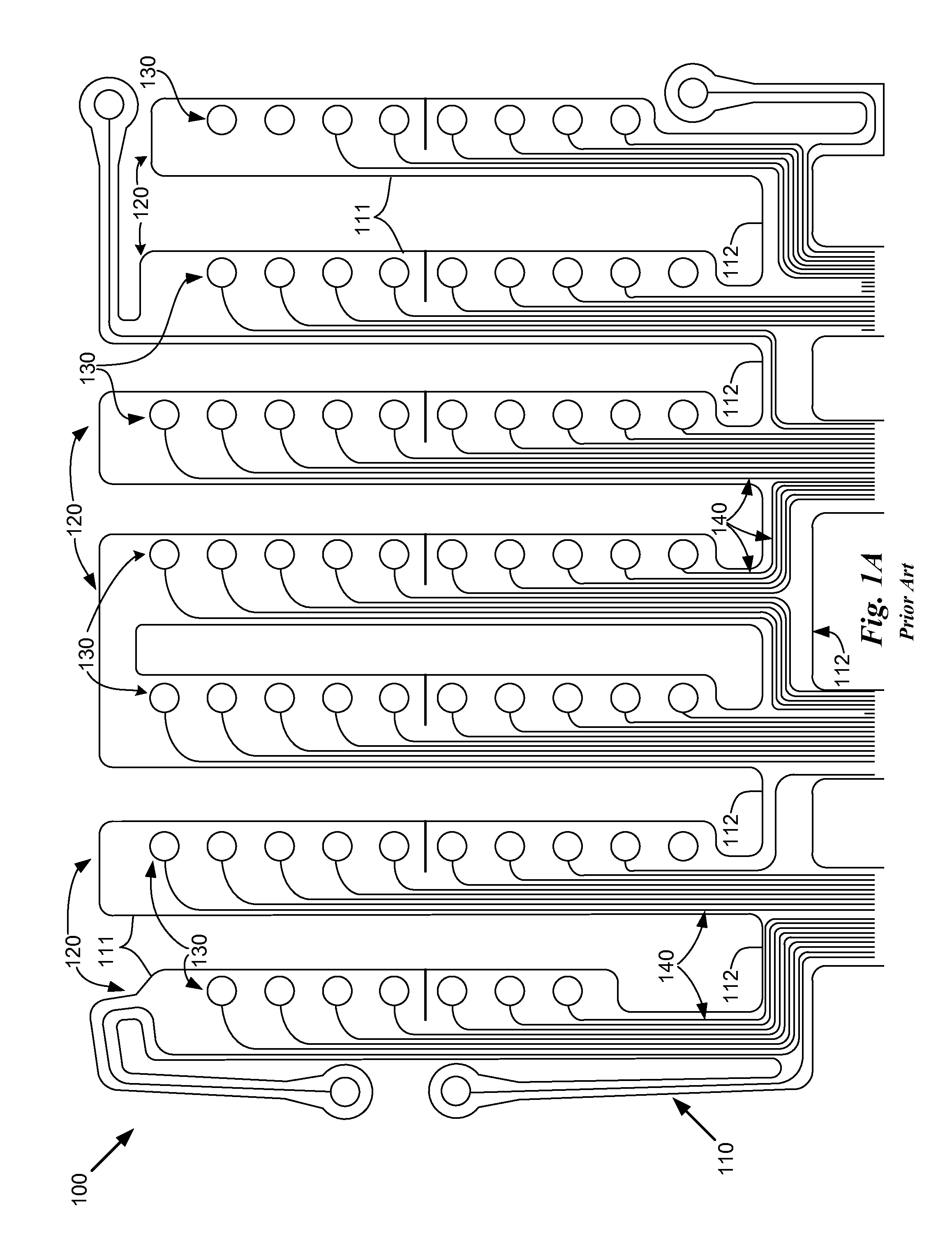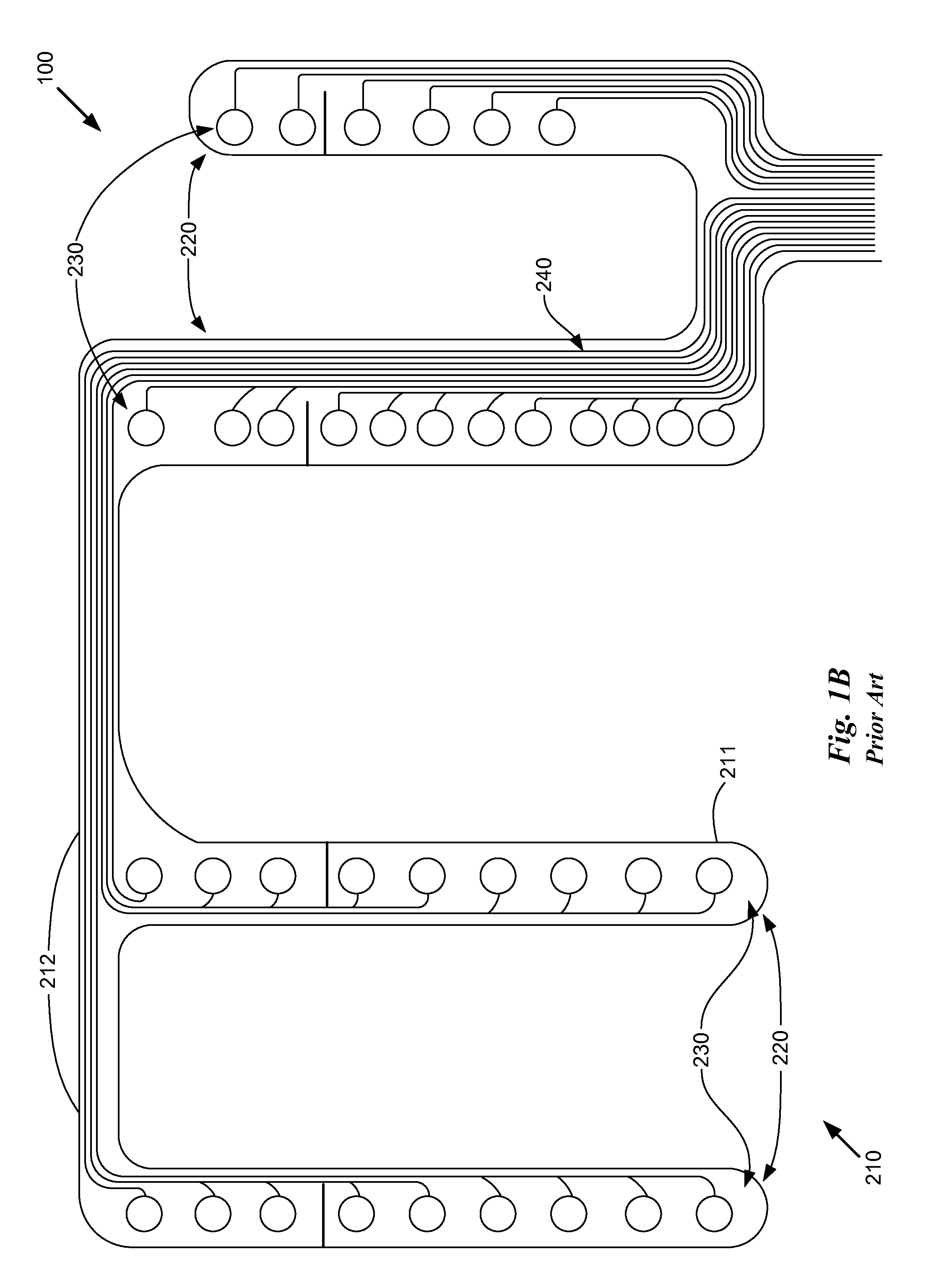Sensor device with flexible joints
a sensor device and flexible technology, applied in the field of sensors, can solve the problems of prone to kinking and wrinkles, difficult to place on the body, and unwieldy, and achieve the effects of reducing the risk of injury, and reducing the safety of users
- Summary
- Abstract
- Description
- Claims
- Application Information
AI Technical Summary
Benefits of technology
Problems solved by technology
Method used
Image
Examples
Embodiment Construction
[0020]As previously discussed, prior art electrode vests are typically flat and while somewhat flexible, are prone to kinking and wrinkling when positioned on a pliable curved surface, such as the human body. Moreover, these electrode vests may include long finger-like sections that make them an unwieldy and difficult to place onto the body without the sections sticking together or sticking to an unwanted portion of the body. Accordingly, there is a need for a sensor device or vest that is easy to use and which better conforms to the contours of the patient's anatomy.
[0021]FIGS. 3A and 3B illustrate a sensor vest 300 according to an embodiment of the present invention suitable for sensing bioelectric data from the patient or supplying stimulus signals to the patient. Sensor vest 300 includes an anterior portion 310 (FIG. 3A) that is suitable for applying to a patient's front thoracic region and a posterior portion 410 (FIG. 3B) suitable for applying to the patient's back and side (l...
PUM
| Property | Measurement | Unit |
|---|---|---|
| Flexibility | aaaaa | aaaaa |
Abstract
Description
Claims
Application Information
 Login to View More
Login to View More - Generate Ideas
- Intellectual Property
- Life Sciences
- Materials
- Tech Scout
- Unparalleled Data Quality
- Higher Quality Content
- 60% Fewer Hallucinations
Browse by: Latest US Patents, China's latest patents, Technical Efficacy Thesaurus, Application Domain, Technology Topic, Popular Technical Reports.
© 2025 PatSnap. All rights reserved.Legal|Privacy policy|Modern Slavery Act Transparency Statement|Sitemap|About US| Contact US: help@patsnap.com



